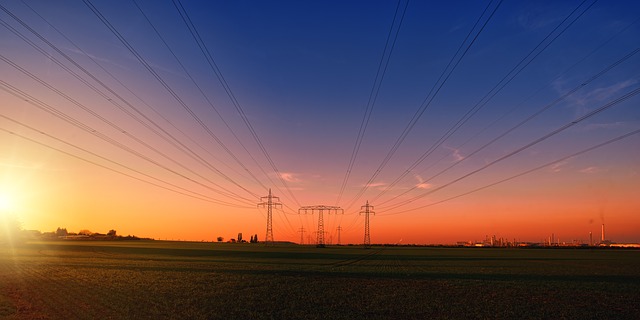Voltage
Voltage is an electromotive force or potential difference measured in Volts. In an electrical circuit’s power source, voltage is the force that moves electrons, as a current, through a conducting loop. It can be imagined in the same way as water pressure forcing water around a plumbing system.
The term 'potential difference' refers to the energy difference between two points in a circuit, and is a measure of how much potential energy exists to move electrons from one point to another. This quantity determines the amount of work that can be done through the circuit.
The unit ‘volt’ (V) was named after the physicist Alessandro Volta who invented the voltaic pile, an early form of household battery. The voltage between two points in a circuit can be measured using a voltmeter. One volt is the difference in electric potential between two points of a conducting loop when a current of one ampere dissipates one watt of power between those points.
Voltage can be either a direct current (DC), as in the case of the potential difference between the terminals of an electrochemical cell, or alternating current (AC), as in the case of the terminals of a common utility outlet. Direct current maintains the same polarity while in an alternating current it reverses direction periodically. The frequency, measured in hertz (Hz), is the number of cycles per second.
Life safety and firefighting power supplies, second edition, written by Tony May and published by BSRIA in 2021, gives the following definitions of supply voltage:
- Extra low voltage (ELV) - 50 V or less
- Lov voltage (LV) - 50 V to 1 kV
- Medium voltage (MV) - 1 kV to 36 kV
- High voltage (HV) - 36 kV to 150 kV
- Extra high voltage (EHV) - more than 150 kV
[edit] Related articles on Designing Buildings
- Ampere.
- Electrical energy.
- Electricity.
- Electricity supply.
- Glossary of electrical terms.
- Kilowatt hour.
- Low voltage.
- Rapid voltage changes.
- Transient voltage.
- Voltage interruptions.
- Voltage sag.
- Voltage swell.
- The Future of Electricity in Domestic Buildings.
- Uninterrupted power supply for buildings.
- Watt.
Featured articles and news
The UK's Modern Industrial Strategy: A 10 year plan
Previous consultation criticism, current key elements and general support with some persisting reservations.
Building Safety Regulator reforms
New roles, new staff and a new fast track service pave the way for a single construction regulator.
Architectural Technologist CPDs and Communications
CIAT CPD… and how you can do it!
Cooling centres and cool spaces
Managing extreme heat in cities by directing the public to places for heat stress relief and water sources.
Winter gardens: A brief history and warm variations
Extending the season with glass in different forms and terms.
Restoring Great Yarmouth's Winter Gardens
Transforming one of the least sustainable constructions imaginable.
Construction Skills Mission Board launch sector drive
Newly formed government and industry collaboration set strategy for recruiting an additional 100,000 construction workers a year.
New Architects Code comes into effect in September 2025
ARB Architects Code of Conduct and Practice available with ongoing consultation regarding guidance.
Welsh Skills Body (Medr) launches ambitious plan
The new skills body brings together funding and regulation of tertiary education and research for the devolved nation.
Paul Gandy FCIOB announced as next CIOB President
Former Tilbury Douglas CEO takes helm.
UK Infrastructure: A 10 Year Strategy. In brief with reactions
With the National Infrastructure and Service Transformation Authority (NISTA).
Ebenezer Howard: inventor of the garden city. Book review.
The Grenfell Tower fire, eight years on
A time to pause and reflect as Dubai tower block fire reported just before anniversary.
Airtightness Topic Guide BSRIA TG 27/2025
Explaining the basics of airtightness, what it is, why it's important, when it's required and how it's carried out.
Construction contract awards hit lowest point of 2025
Plummeting for second consecutive month, intensifying concerns for housing and infrastructure goals.
Understanding Mental Health in the Built Environment 2025
Examining the state of mental health in construction, shedding light on levels of stress, anxiety and depression.






















